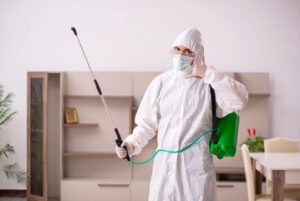Olmsted Plumbing is the system of pipes, fixtures, and appliances that conveys water for many uses in a building. It also includes a drainage system for removing waste.
Without adequate plumbing, homes and businesses would face serious problems with water supply and waste management. Plumbers are the professionals who keep these crucial systems functioning properly.

Pipes transport water, gas, and other liquids through a home or building and are also a key component in waste and drainage systems. Several different types of pipes are available, each designed for a specific purpose. Pipes can be made from a wide range of materials, including plastic and metal. They are typically round, which helps them distribute the pressure of whatever is inside of them evenly.
Pipe sizes are determined by their diameter, with larger pipes having a larger diameter than smaller ones. There are also different systems for sizing pipes, depending on the material and application. For example, copper tubing for plumbing uses a different sizing system than residential copper pipe.
There are five main types of pipes that plumbers use today: copper, polyvinyl chloride (PVC), acrylonitrile butadiene styrene (ABS), cross-linked polyethylene (PEX), and chromium-copper alloy (CPVC). PEX is a popular choice for household plumbing because it is durable, flexible, and easy to install. It is also resistant to extreme temperatures and can last for up to 50 years.
PVC is a common option for residential plumbing because it is inexpensive and versatile. It can be installed in a variety of ways, including being run through walls and ceilings. It is also resistant to extreme temperatures and doesn’t corrode easily. It is also easy to work with and can be fitted to tight spaces.
Copper pipes are durable and can withstand high water pressure, but they are more expensive than other options. They can also be difficult to work with because they require soldering for every joint. They are also not good for underground lines because they can rust over time. However, they are great for kitchen faucets and other appliances that need to be connected to a water supply.
Older homes may have copper, galvanized steel, or cast iron pipes in their plumbing systems. These are no longer the norm, but they are still common in older buildings. These pipes are not ideal because they can corrode over time, and they can cause lead poisoning in drinking water.
Fixtures
In a plumbing system, fixtures are exchangeable devices that connect to pipes to deliver water. They include faucets, sinks, bathtubs and showers. These devices are essential to the everyday function of your home and bathroom. You can find a wide variety of styles and designs to fit your lifestyle. The most common types of fixtures include faucets, sinks and toilets. There are many different types of sinks available, including pedestal and undermount models. There are also many types of toilets, from single-flush to dual-flush.
Fixtures are important to the daily function of a home or business and need to be maintained regularly to prevent problems. Keeping up with regular maintenance and checking for leaks is the best way to ensure that your plumbing system is working properly.
Using a shut off valve for each fixture will help to keep water flow to a minimum in the event of an emergency or repair. This will also save you money on your utility bill.
Faucets are a fixture used for the delivery of hot and cold water in homes and businesses. They are installed on the end of a pipe that extends from the main water supply line. They are typically found in kitchens and bathrooms, and can be either wall-mounted or mounted on the sink or countertop. Faucets are available in a range of sizes and styles, and can be either manual or automatic.
The most important and essential plumbing fixture is the toilet. It is used to flush waste, and needs to be cleaned regularly to avoid a build-up of germs. It is also important to check the base of the toilet regularly for signs of wear and tear. A damaged toilet can cause significant damage to your home, so it is important to get it fixed as soon as possible.
Bathtubs are another important plumbing fixture, and can be found in many different styles. There are freestanding tubs, clawfoot tubs and built-in tubs. Each type has its own unique set of features and benefits. A bathtub can be used for soaking, relaxation or cleaning and comes in a variety of materials. Some bathtubs even have jets for added functionality.
Installation
Plumbing involves the installation, repair, and maintenance of pipes and fixtures that facilitate water supply, waste removal, and heating and cooling in residential and commercial structures. Plumbers use specialized tools and equipment to perform their job duties. They also ensure that all plumbing systems comply with local codes and regulations.
Plumbers usually begin their work by laying out the necessary pipes for the project. They may then install a backflow preventer to keep contaminants from entering the water supply. They also inspect the entire plumbing system for leaks and other problems. Depending on the scope of the project, they may also need to remove existing fixtures and make structural modifications.
Before any plumbing work can be done, the plumber must obtain the required permits. This process usually requires submitting a detailed plan and specifications for review by regulatory agencies. It also involves paying fees and undergoing inspections to ensure that the work is done correctly and meets all standards.
Once the permits are secured, the plumber can begin the installation process. For new construction, the plumber will first lay the necessary underground pipes before the foundation is poured. This includes sewage and drainage lines, which must be properly connected to the city sewer system or a septic tank. The plumber will then connect the water supply lines to the piping system, including cold and hot water lines.
These lines will lead to all of the fixtures and appliances in your home. The hot water line will run from your water heater to the faucets in your home. The cold water line will lead to the refrigerator, dishwasher, and other appliances. The sewage line will run from your toilets to the septic tank or city sewer system.
A plumbing system must be designed to meet the specific needs of a household. This will involve considering factors such as water usage, fixture type, and temperature. It is also important to consider energy efficiency, as this can reduce your utility bills. Additionally, it is vital to avoid cross connections, which can cause contaminants like sewage and pesticides to enter the water supply.
Maintenance
Plumbing is crucial to the health and safety of a building’s occupants. It supplies clean water, removes waste, and protects against environmental hazards. It also ensures that fixtures and appliances work properly, which is why it’s so important to keep up with regular maintenance.
Plumbing maintenance can help reduce the risk of costly repairs, and it can also extend the lifespan of pipes, fixtures, and appliances. In addition, it can save on energy costs and prevent costly water damage to a property. Regular inspections and routine maintenance can also help identify potential problems before they become major issues, such as leaks and clogs.
When choosing a plumber, it is important to find one with experience and a good reputation. Check if they are members of a trade association, such as the Association of Plumbing and Heating Contractors (APHC) or the Chartered Institute of Plumbing and Heating Engineering (CIPHE). This will ensure that they are qualified and reputable. It is also a good idea to ask for references and testimonials from previous clients. This will give you an idea of their customer service and quality of work.
Regular plumbing maintenance can also improve a home’s energy efficiency, which can save money in the long run. It can also help keep contaminants and bacteria out of the water supply, which is especially important in Seattle, where contamination is a major concern.
One of the most important roles of a plumber is to inspect and test a building’s plumbing system to detect any leaks, clogs, or other issues. They can then repair or replace the affected parts to restore functionality and improve efficiency. Plumbing maintenance also includes installing new fixtures and appliances, such as toilets, faucets, sinks, dishwashers, and water heaters.
Plumbing systems are complex and often involve many different parts. They are also subject to extreme temperatures and other environmental factors. Regular maintenance can help prevent damage and ensure that a building’s occupants are safe and comfortable. Plumbing maintenance should be a priority for any homeowner. It is an excellent way to protect a property’s value and ensure that it functions as intended.
